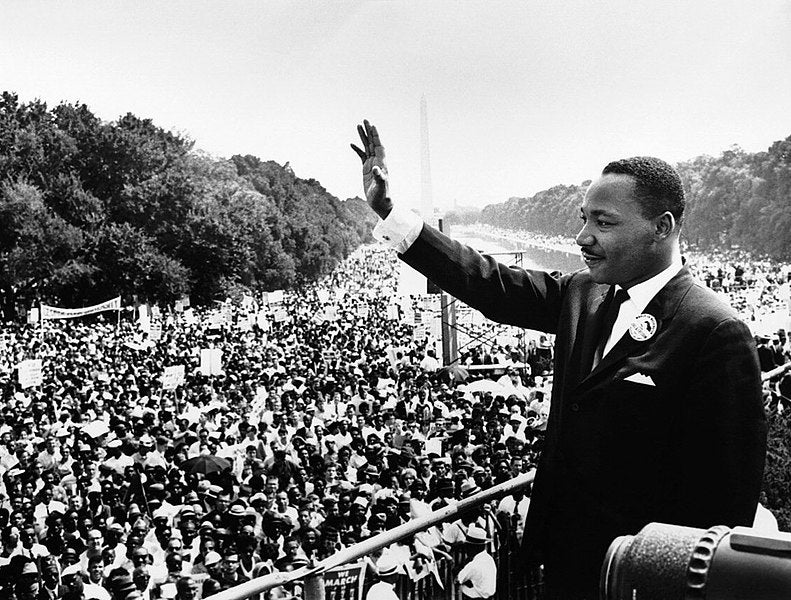Tom Brokaw is just the latest media personality ignorant of the breadth of Latino contributions to this fine country to speak out. His comments on Meet the Press asserting that Hispanics (Latino, American Latino, and Hispanic are used interchangeably here) should work harder at assimilating was rightly received with outrage and backlash from the Latino community. But it should be no surprise given where we stand in the national narrative.
Though Latinos represent nearly one in five Americans today and are projected to account for nearly one in three Americans by 2060, there is very little in our public dialogue that accurately represents who we are and what we contribute to this nation. Locked into one-dimensional narratives about immigration or neglected in our primary black and white narrative of America — Latinos, like Native Americans and Asians, rarely see themselves represented at all (let alone accurately) in the American story.
I agree with Tom Brokaw on one thing: Latinos today are not assimilating, a word that implies leaving our culture behind and adopting the dominant culture. Instead we are acculturating. We learn English, adopt cultural norms, serve in the military at higher ratios than other groups, value education and hard work as the path to mobility — but increasingly we also value and maintain our language and roots, bringing great richness to this country.
The common narrative is that Latinos are immigrants who don’t speak English and take jobs from “real” Americans. In fact, the growth in the Latino population today is driven by US births. Hispanics become English-dominant by the second generation. In 2016, Hispanics accounted for 16.8 percent of the labor force and are net drivers of new business growth surpassing any other group, including non-Hispanic white Americans. America’s growth would look a lot more like Europe’s were it not for American Latinos.
Furthermore, Hispanics are not new to this country. The first Hispanics arrived before the pilgrims did. The oldest non-native American city in the US is St. Augustine, founded by the Spanish in 1565. The oldest capital city in the United States is Santa Fe, New Mexico, settled by the Spanish in 1607. The land that makes up all or parts of Arizona, California, Colorado, Nevada, New Mexico, Utah, and Wyoming was handed over to the United States in the treaty of Guadalupe Hidalgo in 1848, making the Mexicans in those lands US citizens overnight. It also guaranteed those newly American citizens the right to their property, language, and culture. The people living in those states did not cross the border — the border crossed them.
Some American Latinos have lived in the United States for generations. Others came as refugees from Castro’s dictatorship, or from the wars in Central America. Some were state-sponsored labor recruits of the Braceros Program (Mexicans) or Operation Bootstrap (Puerto Ricans). Some were born in one of the last remaining protectorates in the world (Puerto Rico) and are citizens by birth. And yes, some cross the border without official documentation, but actual growth in the population is driven by Hispanics born in the US, not immigration.
Another commonly misunderstood fact about Latinos: We do not share a single identity, though we are categorized as either Hispanic or Latino in the United States and on Census forms. American Latinos come from across Latin America and the Caribbean, representing a variety of cultures, races, ethnicities, and religions. There are Muslim, Hindu, Christian, and Jewish Latinos, as well as those of indigenous, Asian, African, and Middle Eastern decent and more. If the US is a melting pot, American Latinos are a paella: a mixture of rice, vegetables, meat, and seafood that retains their individual parts rather than melding together into one stew.
You can thank Latinos for salsa, both the music and condiment. Tabasco has long outpaced ketchup as the condiment of choice for Americans. You can thank Latinos for driving entrepreneurship, and for providing needed labor to keeping our economy humming. One in four K-12 students are Latino, meaning that we are not only a force now, we will increasingly be one.
For these and many other reasons, what’s most surprising is not that an allegedly educated media personality would misrepresent the Hispanic reality. It’s that today — in light of our long history, our growth, and our increasing influence — scant attention and resources are directed to understanding, studying, and supporting this incredibly important and growing population.
Where are the Latinos on corporate boards? Where are the Latino school superintendents? Where are the Latino commentators, or editorial board members? Where are the Latino foundation presidents? You might be able to find a few in each of these categories, but when this population is such a force, the lack of representation is stark, and exemplifies the “invisible Latino,” the missing story of Latinos in the American narrative. Until we fix this by telling more complete stories, by investing in Latino communities, and by integrating Latinos into all aspects of the fabric of America, we will continue to have one-dimensional conversations that misunderstand the most important demographic influencing our country.


